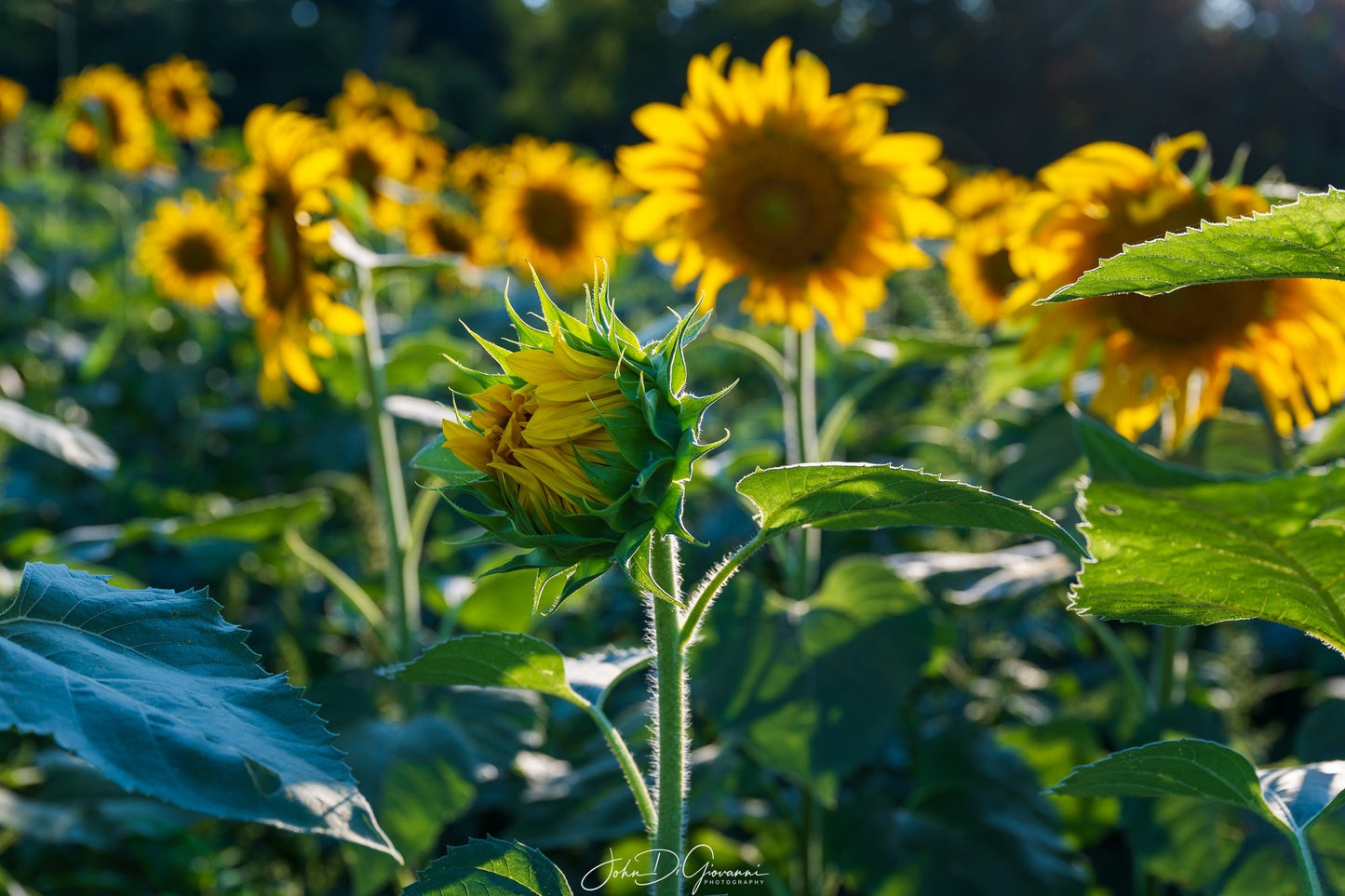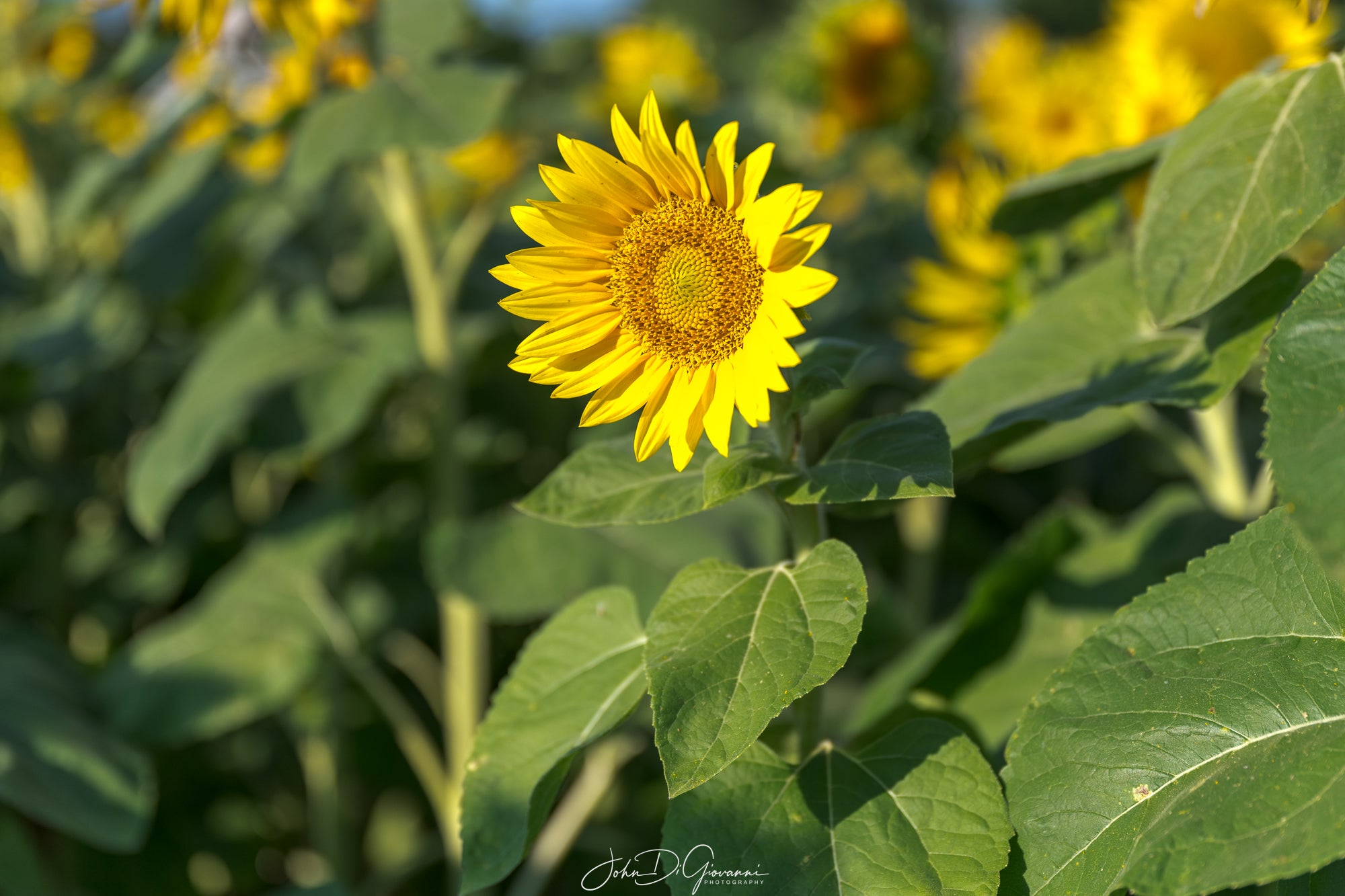50% off for a limited time.
Was $5.99 Now $3.00

I find sunflowers to be such an interesting photography subject. These flowers seem to brighten just about everyone's day. Their vibrant colors and intricate details make them mesmerizing subjects, while clusters and fields of the flowers make for a great subject during a sunrise or sunset.
There are over 70 varieties of sunflowers. Dwarf varieties might only grow to a few inches tall, while the giant varieties might reach 15 feet tall. Apparently the tallest sunflower ever recorded reached 30 feet.
What most people think of as the "sunflower" is actually called the composite head of the sunflower and consists of two parts. The first part, are the outer yellow petals called "ray florets," that encircle the flower head, and function to attract pollinators. The second part is the central, or inner part of the composite head, which are spirally arranged "disc florets" that are tubular structures containing both the male and female reproductive organs, which ultimately turn into fruit (seeds) as the plant matures. The ray and disc florets sit inside of the receptacle, which is the part of the plant that holds the head structures in place.
The disc florets are arranged in a Fibonacci Sequence in which there are generally 34 florets spiraling in one direction and 54 florets spiraling in the other direction. In large sunflowers the arrangement might be 89 spirals in one direction and 144 in the opposing direction. A Fibonacci sequence is one in which the sum of two consecutive numbers, gives you the next number (1+1=2, 1+2=3, 2+3=5, 3+5=8, 5+8=13, 8+13=21, 13+21=34, 21+34=55, 34+55=89, 55+89=144) - in sunflowers theses patters fall within the Fibonacci sequence of 34, 55, 89 and 144. This video includes an a nice explanation
Young sunflowers orient themselves towards, and track the moving sun, this is called heliotropism. Once mature, then they become fixed in easterly facing position and heliotropism ends.
SUNFLOWERS IN MARYLAND
Where I live in Maryland I have access to plenty of sunflower fields. The details of the plants are striking, but so is the contrast between the yellow petals and a blue sky on a nice summer day. Let's dive in and explore these amazing plants with photos.


Certainly the soft light around sunrise and sunset is nice, the below image, titled Wailaua Sunflower is one that I captured in a sunflower field in Wailaua on the North Shore of Oahu Hawaii in 2016.

The geometric patterns of these flower are also striking, so moving around them allows you to find interesting angles and textures that help show off how incredible of a subject they can be. The first image below shows the layers and details of a receptacle that is opening. The second image below captures the back and side of the receptacle.


I like the layers of details in the opening sunflowers that is illustrated in the next few images.



The image below, Rocky Point Sunflower, shows the spiraling pattern that the disc florets produce.



Now that you have some tips and tricks up your sleeve, grab your phone or camera and head out this summer to capture the beauty of sunflowers. Let the vibrant colors, intricate details, and natural beauty brighten up your day.


